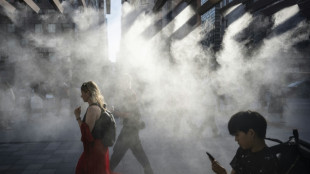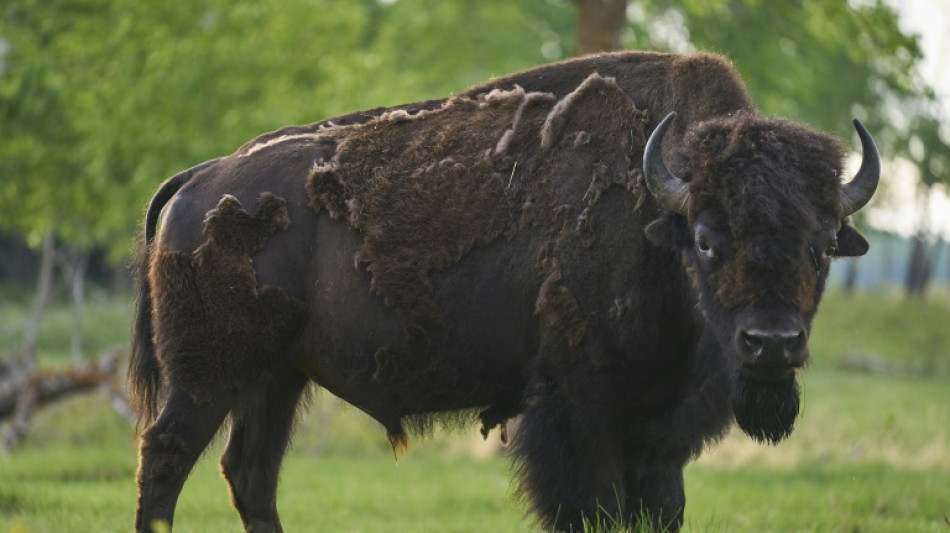
-
 Scandic Trust Group strengthens sales network with First Idea Consultant
Scandic Trust Group strengthens sales network with First Idea Consultant
-
Rees-Zammit set for Wales return with bench role against Argentina

-
 China's new aircraft carrier enters service in key move to modernise fleet
China's new aircraft carrier enters service in key move to modernise fleet
-
Operation Cloudburst: Dutch train for 'water bomb' floods
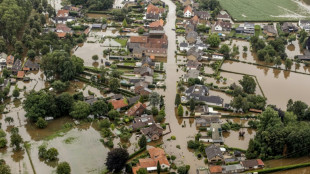
-
 Leaders turn up the heat on fossil fuels at Amazon climate summit
Leaders turn up the heat on fossil fuels at Amazon climate summit
-
US travel woes mount as govt shutdown prompts flight cuts
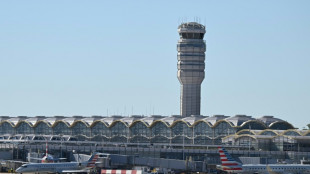
-
 North Korea fires unidentified ballistic missile: Seoul military
North Korea fires unidentified ballistic missile: Seoul military
-
West Bank's ancient olive tree a 'symbol of Palestinian endurance'
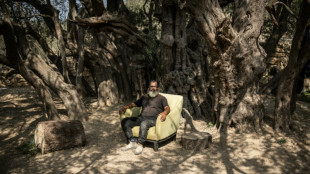
-
 Global tech tensions overshadow Web Summit's AI and robots
Global tech tensions overshadow Web Summit's AI and robots
-
Green shines as Suns thump Clippers 115-102

-
 Japan to screen #MeToo film months after Oscar nomination
Japan to screen #MeToo film months after Oscar nomination
-
Erasmus relishing 'brutal' France re-match on Paris return

-
 Rejuvenated Vlahovic taking the reins for Juve ahead of Turin derby
Rejuvenated Vlahovic taking the reins for Juve ahead of Turin derby
-
'Well-oiled' Leipzig humming along in Bayern's slipstream

-
 Bangladesh cricket probes sexual harassment claims
Bangladesh cricket probes sexual harassment claims
-
NFL-best Broncos edge Raiders to win seventh in a row

-
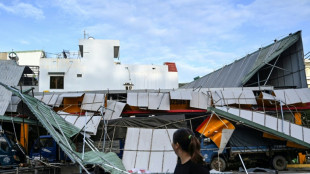 Deadly Typhoon Kalmaegi ravages Vietnam, Philippines
Deadly Typhoon Kalmaegi ravages Vietnam, Philippines
-
Three killed in new US strike on alleged drug boat, toll at 70

-
 Chinese microdrama creators turn to AI despite job loss concerns
Chinese microdrama creators turn to AI despite job loss concerns
-
Trump hails Central Asia's 'unbelievable potential' at summit

-
 Kolya, the Ukrainian teen preparing for frontline battle
Kolya, the Ukrainian teen preparing for frontline battle
-
Big leap in quest to get to bottom of climate ice mystery
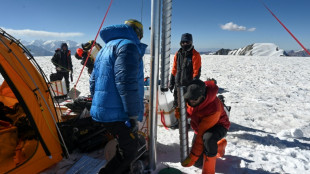
-
 Markets drop as valuations and US jobs, rates spook investors
Markets drop as valuations and US jobs, rates spook investors
-
'Soap opera on cocaine': how vertical dramas flipped Hollywood

-
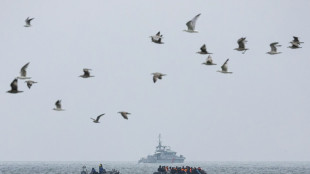 Under pressure? EU states on edge over migrant burden-sharing
Under pressure? EU states on edge over migrant burden-sharing
-
US influencers falsely associate Mamdani with extremist group

-
 Hungary's Orban to meet Trump in face of Russia oil sanctions
Hungary's Orban to meet Trump in face of Russia oil sanctions
-
US facing travel chaos as flights cut due to govt shutdown

-
 Liverpool and Man City renew rivalry as they try to narrow Arsenal gap
Liverpool and Man City renew rivalry as they try to narrow Arsenal gap
-
UK's Andrew asked to testify over Epstein as he formally loses titles
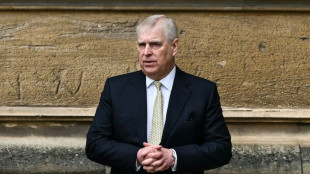
-
 Local hero: 'DC sandwich guy' found not guilty of assaulting officer with sub
Local hero: 'DC sandwich guy' found not guilty of assaulting officer with sub
-
Dead famous: Paris puts heritage graves up for grabs

-
 UK grandmother on Indonesia death row flies home
UK grandmother on Indonesia death row flies home
-
Former NFL star Brown extradited from Dubai to face trial in shooting - police

-
 How to Sell Your Small Business Fast (Guide Release)
How to Sell Your Small Business Fast (Guide Release)
-
Chile presidential hopeful vows to expel 'criminal' migrants to El Salvador

-
 Trump event paused in Oval Office when guest faints
Trump event paused in Oval Office when guest faints
-
NFL Colts add Sauce to recipe while Patriots confront Baker

-
 Home owned by Miami Heat coach Spoelstra damaged by fire
Home owned by Miami Heat coach Spoelstra damaged by fire
-
Tesla shareholders approve Musk's $1 trillion pay package

-
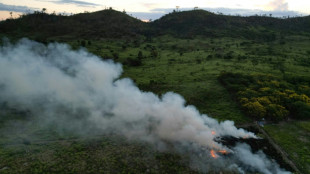 World leaders launch fund to save forests, get first $5 bn
World leaders launch fund to save forests, get first $5 bn
-
Villa edge Maccabi Tel Aviv in fraught Europa League match

-
 Protests as Villa beat Maccabi Tel Aviv under tight security
Protests as Villa beat Maccabi Tel Aviv under tight security
-
US Supreme Court backs Trump admin's passport gender policy

-
 Japan boss Jones backs Farrell to revive Ireland's fortunes
Japan boss Jones backs Farrell to revive Ireland's fortunes
-
MLB Padres name former reliever Stammen new manager

-
 'Grand Theft Auto VI' video game delayed again until Nov. 2026
'Grand Theft Auto VI' video game delayed again until Nov. 2026
-
Martino returns as head coach of MLS Atlanta United

-
 Hamilton dismisses Ferrari exit claims
Hamilton dismisses Ferrari exit claims
-
Musetti keeps ATP Finals hopes alive, joins Djokovic in Athens semis


Bison reintroduced to Canada's Banff thrive again
Wild bison that once numbered in the tens of millions in North America before being hunted almost to extinction are once again thriving in a pocket of western Canada.
Appearing from a distance as specks against the backdrop of the Rocky Mountains, these animals are also restoring balance at the top of a fragile ecosystem.
North America's largest land mammal -- growing to 900 kilograms (2,000 pounds) and 1.8 meters (six feet) high at the shoulders -- suffered a dramatic decline in late 19th century due to hunting and habitat loss as settlers pushed westward.
They were reintroduced to what is now Banff National Park in 2017.
"The moment the bison set foot on that landscape, it felt to me that I brought them home," says Wes Olson, who accompanied the first 16 bison to be released there.
Transferred by helicopter from a biosphere reserve near Edmonton, Alberta, the population has exploded and new births are expected to push their numbers to 100 by year's end.
A Parks Canada report published this week concluded that the reintroduction was a success, and it suggested that due to their robust growth rate, this bison subpopulation -- one of only five that occupy a mere 0.5 percent of their original range in North America -- may no longer be considered endangered within a decade.
As soon as they arrived, Olson says, the ancient ecosystem was suddenly reactivated and the bison appeared to feel right at home, while other forest creatures quickly and "intrinsically" reestablished a symbiotic relationship.
Squirrels with puffy cheeks can be seen busily collecting hairs shed by the burly beasts, says the 69-year-old former park warden.
One hundreds species of insects colonize its nutrient-rich dung.
Birds also get in on the action. They take turns sitting on bisons' backs and plucking bits of fur to make nests, as well as bugs or seeds trapped in it to eat. Warmer and more comfortable fur-lined nests lead to better outcomes for the chicks.
- Great Plains 'landscape engineers' -
A "keystone species" of the Great Plains, a broad expanse of flatlands that stretch across 13 Canadian provinces and US states, from Alberta to Texas, wild bison, by way of their grazing, have shaped this environment.
These "landscape engineers" are on the move as they graze rather than focus on the same patch of land, with their role somewhat like that of elephants in Africa, explains Marie-Eve Marchand of the International Buffalo Relations Institute.
And with herds mobile like that, grasslands are able to regenerate and better store carbon and water, according to a study by the University of Alberta. Other studies also found that the presence of bison makes them more resilient to drought.
Between 30 and 60 million bison once roamed North America. At the end of the 19th century, there were only a few hundred left.
Their decline had a devastating impact also on Indigenous tribes that relied on the animals for food, as well as clothing, shelter and religious worship.
Their return to Banff, an ancestral gathering place of local tribes, has helped revive "parts of our language, culture and deep, deep spirituality that the first peoples of this place had with the land," says Marchand.
- Indigenous future includes bison -
"At one point," says Violet Meguinis of the Tsuut'ina First Nation of southern Alberta, "bison was our main source of food."
"Bringing them back and releasing them in the wild is significant for us," she says.
Several Indigenous communities have been working in recent years to reintroduce bison to their ancestral lands and are eager to do more, including the Tsuut'ina, which started by raising a domestic herd of 400 bison about 100 kilometers (60 miles) east of Banff.
Clayton Whitney has cared for the animals for eight years, helping to "bring them back from extinction," work that he considers to be a privilege given how important bison are to the community.
The tribe comes together to butcher a few each year for their meat and hides as their ancestors did, while the simple act of moving the herd from paddock to paddock to mimic their movements in the wild has stirred growth of plants used for Indigenous traditional medicines, he says.
The entire community takes part in the ritual slaughter, with elders passing on their knowledge of how to properly skin the animal, and leave none of it to waste.
"We depend on (the bison) as much as it depends on us," says Meguinis.
"We want this land to be there for them, we want the bison to be here because then that preserves our own future," she sums up.
S.F.Warren--AMWN

